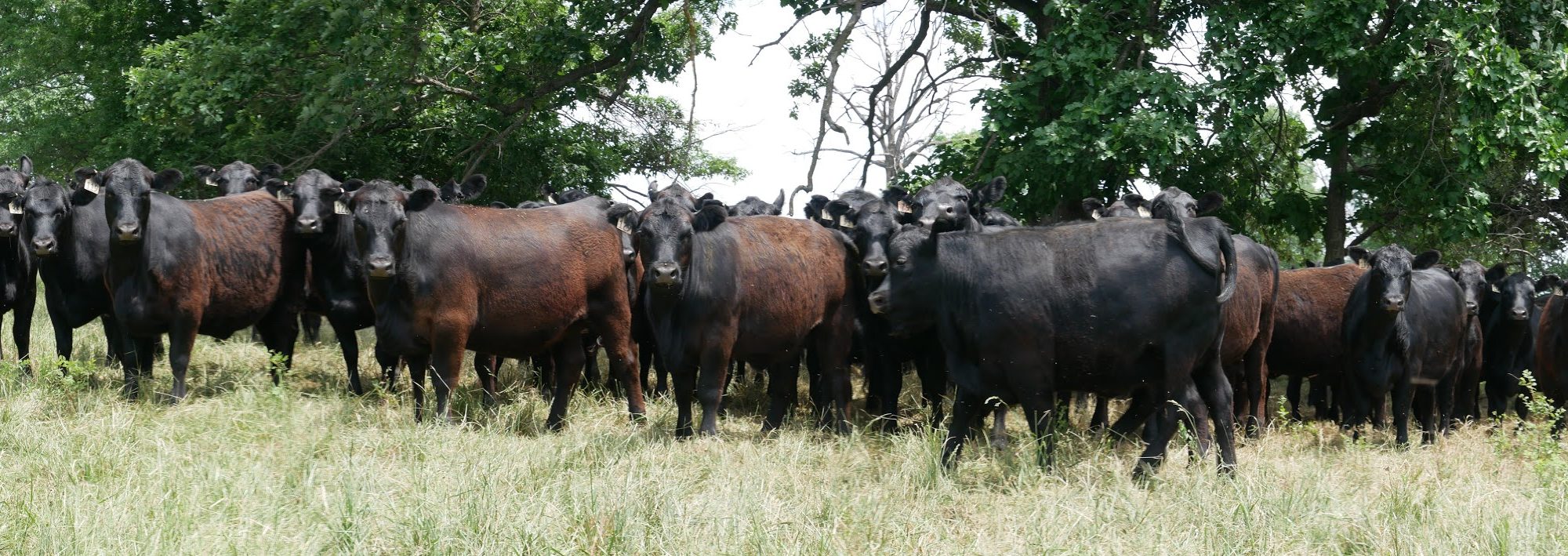

Dr. Troy Rowan
Assistant Professor
UTIA Genomics Center for the Advancement of Agriculture
P: 865-974-3190
Originally Published: Santa Gertrudis
Historically, genetic evaluations required only records from animals that were being registered. This meant that females that failed to reproduce and calves that were not worthy of registration did not have records at a breed association. Recently, most breed associations have created initiatives or requirements where records are generated for each cow in a herd and her calf, regardless of registration status. This practice is referred to as whole herd reporting (WHR). In practice, whole herd reporting has multiple benefits: the ability to calculate EPDs for heifer pregnancy and cow longevity, unbiased contemporary group calculations for weaning weights, and the capacity to account for selection when calculating yearling weights. All of these benefits result in more accurate selection tools for seedstock producers and commercial customers alike.
Accurately predicting the genetic merit of individuals in beef cattle populations relies on three major factors:
- Accurate measurements of economically relevant traits (or correlated indicators)
- Pedigrees (and/or genomic information) that account for relationships between individuals in a genetic evaluation
- Records on animals with a shared environment and management (contemporary groups).
Whole Herd Reporting in Practice
At its core, whole herd reporting relies on maintaining an up-to-date animal “inventory” where every cow in an operation is accounted for annually. Whole herd reporting programs are designed to incentivize phenotypic recording on all individuals, not just those that will go on to be registered. The fee structures of whole herd reporting programs reflect this. Instead of paying a registration fee for each calf that is registered, participants pay an enrollment fee for each female in their inventory (Usually ~½ the cost of a typical registration). Calves born from inventoried females are then eligible for registration at no additional cost, provided all required performance recording obligations are met.
Most breed associations and the Beef Improvement Federation (BIF) guidelines suggest that herds with both spring and fall calving cows divide the two into separate inventories (spring calving from January 1 to June 30 and fall calving from July 1 to December 31). Cows can move between inventories, an action that typically takes place after the previous season’s calf crop is weaned and preg checks are complete, but before the subsequent calving season begins.
For spring calving cows, an annual reporting period occurs prior to calving, typically in late December or early January. Here, a breeder lists all of the animals that they will be reporting performance on over the next 12 months. Animal disposals (culls, sales, etc.) and purchases from the previous 12 months are reported at this time. During the subsequent 12 months, each cow in inventory must report either a calf weaning weight or a reason why collecting a calf weaning weight was not possible (loss of calf, loss of dam, failure to produce a calf). This unbiased reporting of cow reproductive status allows us to begin measuring cow reproductive status and longevity.
These are the absolute minimum requirements of whole herd reporting programs industry-wide, but BIF Guidelines recommend that producers collect additional performance data on the herd. These include breeding dates (AI dates or natural service exposure date range), pregnancy status at inventory reporting, calving date, and calving ease score for each inventoried female.
Selection tools enabled and improved by whole herd reporting
Whole herd reporting requires a bit more record-keeping than traditional registration. However, for producers already measuring weaning weights on a portion of their calf crop, these additional records are only marginally more work to collect and can enable the creation of selection tools that advance a breed registry’s genetics much faster and more accurately than current methods allow.
EPDs rely on the ability to routinely measure economically relevant phenotypes or highly correlated indicator traits. This is straightforward to do for phenotypes like weights (birth, weaning, yearling), but measuring fertility or cow longevity has proven more difficult. Heifer pregnancy rate (the probability that a bull’s daughter will conceive as a heifer) and stayability (the probability that a cow will remain productive until at least 6 years old) are two valuable phenotypes that can be measured and predicted. The EPD calculations of all traits benefit from whole herd reporting, but it is absolutely required for stayability and heifer pregnancy!
An example below illustrates why whole herd reporting is essential for collecting accurate heifer pregnancy and stayability measurements. Here, two cows successfully produce a calf each year from ages 2 through6, which should qualify them as both heifer pregnancy and stayability “successes”. However, calves from Cow #2 are not registered in years 1 and 5, classifying her as a “failure” for both phenotypes in a traditional reporting scheme.

Figure 1. Example of whole herd reporting and its impact on heifer pregnancy & stayability phenotype calculations. Each cow has 5 calves over the course of our example. A calf’s registration status is represented by a certificate to its right. Despite both cows functionally qualifying as heifer pregnancy and stayability “successes”, for Cow #2 it would only be observed under a whole herd reporting scheme.
Due to its low heritability (0.10-0.15) and the timescales on which phenotypes are collected (at least 6 years), EPD-based selection tools are critical for making genetic progress on cow stayability. The lack of these selection tools has resulted in genetic progress on stayability and fertility lagging most performance traits. Further, we know that stayability is strongly correlated with other economically-relevant maternal traits like Milk, Heifer Pregnancy, and Udder & Teat Scores (Boldt, 2018, https://www.ncbi.nlm.nih.gov/pmc/articles/PMC6162596/). We would also expect that selection for high stayability females influences other traits that contribute to sustained cow production but are difficult to measure (i.e. health/immune function, rebreeding efficiency, structural soundness). Whole herd reporting is a crucial tool for breeds looking to improve female reproductive performance and longevity.
Whole herd reporting and contemporary groups
Whole herd reporting also affects the accuracy of EPDs for performance traits. By recording weight records on an entire calf crop, we can maximize the size of contemporary groups. Larger contemporary groups allow us to better account for shared environment and management when calculating EPDs. This makes it easier to determine the variation in phenotype that is due to genetics as opposed to an animal’s production environment. Further, reporting only registered animals results in top-performing animals appearing less superior when compared with their peers.
By selectively registering higher-performing animals, the contemporary group’s reported average weaning weight will be larger than the true average for the entire group. This makes top animals appear closer to average than they actually are, and average animals appear below average. When selectively registering, your top calves aren’t being recognized for how superior they actually are!
This can be demonstrated by using a simulated calf crop and changing which calves make up the contemporary group. In the example illustrated below, the average weaning weight of the Whole Herd’s crop (blue distribution) is 500 lbs. For the Registered animals, we randomly chose ¼ of the animals with weaning weights below 500 lbs. to simulate selective registration. This shifts the average weight of the registered calves up to 512 lbs. For a calf with a superior weaning weight (550 lbs.), his weaning weight ratio actually decreases by 3 lbs. when he’s compared to only the registered animals instead of the whole herd.

Figure 2. Example of registration-biased weaning weight reporting. Distributions of weaning weights from the same herd representing either the whole calf crop (blue) or only registered animals (red). Average weaning weights are indicated with vertical dashed lines. The black line demonstrates the impact of biased reporting on the weaning weight ratio of an example superior calf under both reporting schemes.
Whole herd reporting: A tool for breed improvement
Most major beef breeds in the US offer a whole herd reporting program that incentivizes or requires unbiased data reporting. By changing the registration cost structure, breeders can participate in whole herd reporting without additional cost and minimal additional work. For growth and performance traits, whole herd reporting generates larger, more accurate contemporary groups. This further increasing EPD accuracy and gives superior calves the recognition that they deserve for superior performance. Whole herd reporting not only improves individual ratios but helps accelerate genetic progress throughout the breed with more accurate genetic predictions.
As the beef industry continues to place more emphasis on maternal traits and cow longevity, selection tools like stayability EPDs are essential. Selection for these lowly-heritability traits is virtually impossible without whole herd reporting. With small changes to record keeping procedures, breeds and breeders can further accelerate genetic progress through whole herd reporting.